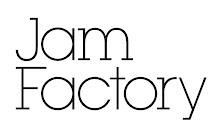Tell us about yourself, how did you become a jeweller?
A visit to Fluxus jewellery gallery and workshop in the mid 80s in Dunedin NZ when I was an arts student studying the classics helped get me hooked on the idea of a career in the crafts as a studio jeweller.
Which jeweller, craftspeople, writers, artists, musician, anyone do you find particularly inspiring?
I’m a greatly inspired by the work of Julie Blyfield along with numerous other wonderful jewellers like Otto Kunzli, Lucy Sarneel, Svenja John to name just a few.
Outside my field the works of Karl Blossfeldt, Paul Klee, Hundertwasser (Friedrich Stowasser), William Morris, Georgia O’Keefe, Margaret Preston, Lucien Henry and many others are always inspirational. Aussie writers like Kate Grenville, Alex Miller and Peter Temple... as well as garden writers like Richard Aitken and Peter Timms always leave me feeling refreshed.
Have any of these people had a specific influence your way you approach to making? If so, how?
I think I’ve been influenced by the clarity of vision that Julie Blyfield seems to convey in her work.
Are there any specific quotes, ideas, places that influence this current body of work?
My observing the curious nature of a Kumquat tree given to me by a family member many years ago that I have planted in my herb garden affected the development of some of the works in the exhibition. This tree’s stem is formed from two separate parts. Onto a root stock of some kind a Kumquat tree has been grafted and it is this join and the process undertaken in order for this to happen that intrigued me.
Are there any specific collections, museums that you have found inspiring and why?
A visit to the Powerhouse Museum as well as the AGSA in 2009 to view some Australian colonial jewellery as part of a fieldwork trip for my Masters study has been the most recent source of contact with collections of artefacts. The use of Australian indigenous flora in some of the works I viewed is really stimulating.
Welcome us to your studio - where is it, do you share the space, if so what are the benefit of a shared space?
I work from home in the suburbs of Melbourne due to family commitments. I get tonnes done but often miss the chatter of a shared space.
The work for the exhibition: Can you describe the specific themes reflected in this body of work?
This series explores concerns to do with place and belonging. I was thinking about hybridity and grafting, often associated with agricultural and horticultural practices to fuse two plants to achieve a desired outcome. The idea of grafting is used in some of these works as a metaphor for the migrant experience, where a fusing of sorts takes place. The series creates a sense of how disparate elements can be engineered and come together to create something completely new. I used motifs from a variety of historical sources as well as indigenous flora from the area where I live to try to generate new meanings and create new ornamental forms that speak to this concept of fusion.
The work arranged in a circle, relates to the ideas of systemisation and classification in the study of botany, to Petri dishes, and to the circular form of pots into which we put many plants.
Describe your method of production in this current work?
These works mix hand-fabrication processes with industrial processes. The combination of industrial techniques and processes with obvious craft processes brings together old and new technologies. These processes in combination with the choice to use an old established material (metal) with a new material (plastic) was aimed at reflecting the underlying concepts of the work with its mixed focus.
skip to main |
skip to sidebar

News, Reviews and Previews from South Australia's premier craft and design centre
About Me

- JamFactory
- A unique centre for the design, production, exhibition and sale of work by leading and emerging Australian designer / makers.
address
19 Morphett Steet Adelaide South Australia
Opening Hours
Mon - Sat: 10 - 5pm
Closed Sunday and Public Holidays
Closed Sunday and Public Holidays
JamFactory Alumni
- Alison Arnold
- Brendan Miller
- Clare Wilson
- Danielle Rickaby
- David Potts
- Erin Keys
- Erin Lykos
- Gareth Brown
- Hannah Carlyle
- Isabella Niven
- Jaan Poldaas
- Jacqueline Knight
- Jason Moss
- John Quan
- Julie Pieda
- Karen Cunningham
- Kath Inglis
- Katrina Freene
- Kirsten Coelho
- Lauren Simeoni
- Leonie Westbrook
- Maria Parmenter
- Maria Parmenter
- Meghan O'Rourke
- Meghann Jones
- Michelle Kelly
- Michelle Taylor
- Nick Mount
- Pauline Delaney
- Peta Kruger
- Rod Mosel
- Sarah Rothe
- Shauna Mayben Swanson
- Sim Luttin
- Sorcha Flett
- Stephanie James Manttan
- Sun-Woong Bang
- Susan Frost
- Takeshi Iue
- Tamara Hahn
- Tegan Empson
- Tom Moore
- Vanessa Williams
- Vipoo Srivilasa
- Zoe Warburton
In the shop
Other Blogs and Artists Sites
- Anna Davern Blog
- Bernadette Trainor
- Chloe Shay
- David Neale
- David Neale Blog
- Emma Fielden
- Gerry Wedd
- Gray Hawk
- Humna Mustafa
- India Flint
- Jane Bowden
- Jane Sawyer
- Jasmine Matus
- Kenji Uranashi
- Lauren Simeoni
- Leslie Matthews
- Mark Vaarwerk
- Matt Dwyer
- Mel Robson
- Mel Young
- Mel Young Blog
- Michelle Kelly
- Oliver Smith
- Peter Walker
- Petra de Mooy
- Sean O'Connell
- Shannon Garson
- Shannon Garson blog
- Vernon Bowden
- Zoe Brand
- Zoe Brand Blog









